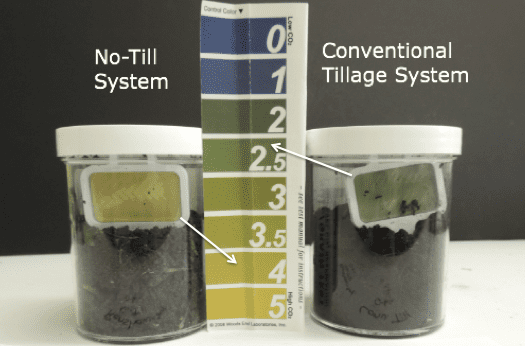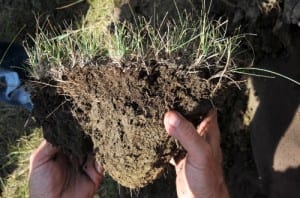
Soil Biological Activity
Soil is alive. It is the organic component of the soil that sets a soil apart from a heap of sand, silt and clay. A single teaspoon of healthy soil can contain a billion microorganisms.
The Soil Food Web
There is a large community of organisms including bacteria, fungi, earthworms, nematodes, mites and others that feed on plant material, breaking it down and causing decay.
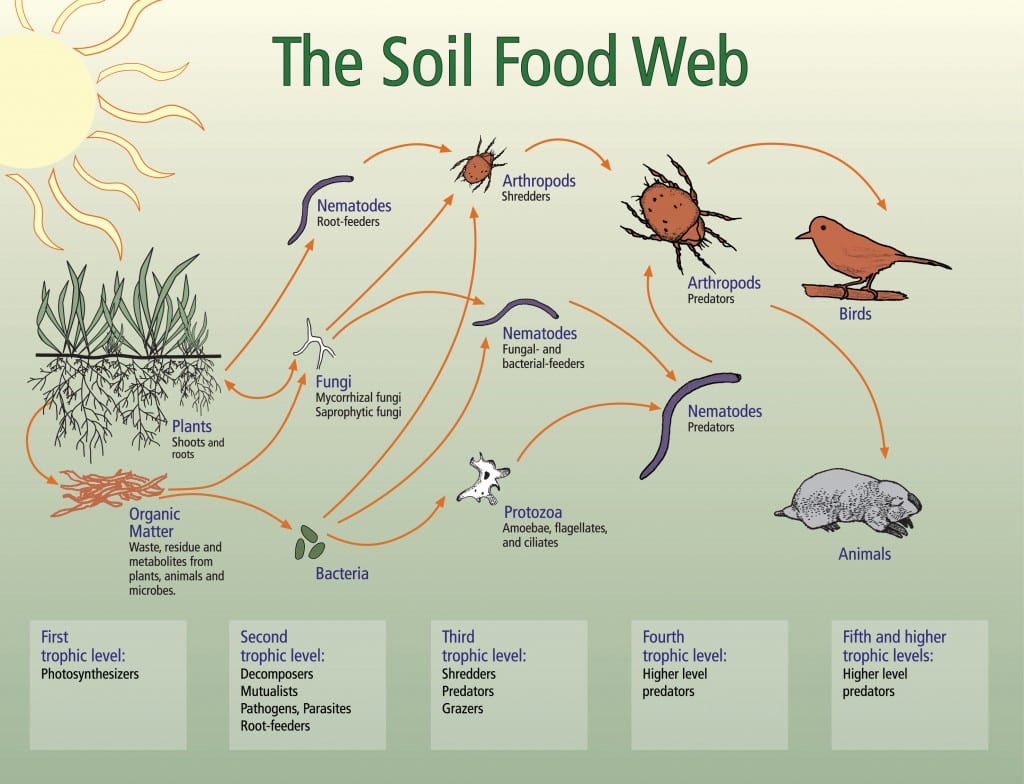
The Soil Food Web developed by the Natural Resources Conservation Service diagrams the conversion of energy and nutrients as organisms are consumed. As organisms decompose nutrients are converted from one form to another, and are made available to plants and other organisms. Click the Soil Food Web image for additional information.
Managing for Soil Biology
It is important to keep in mind that farm management decisions have large effects on the biological activity in the soil. In general, more activity is better for plant productivity. Some management decisions promote greater amounts of biological activity, and others will reduce them. The biggest factor in biological activity in the soil is the amount of organic matter present.
Examples for improving biological activity: improving drainage, balancing fertilizer use,reducing compaction, adding manure/compost, reducing soil disturbance or planting a cover crop.
Measuring Soil Biology
Quantifying soil biological activity can be difficult due to the complexity of the system. Looking at different parameters such as roots, available organic matter, and soil aggregation/how the soil holds together can tell you a lot about the activity or health of the soil.
Rooting
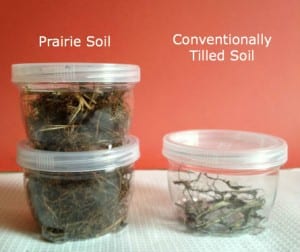
Available Organic Matter
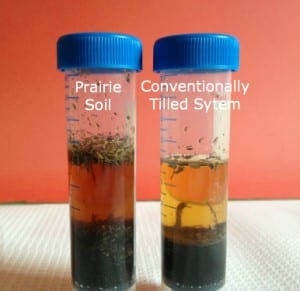
Structure/Aggregation
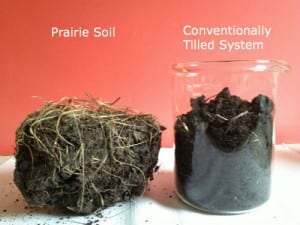
Solvita Respiration Test
This soil testing method determines the level of CO2 given off by a soil or soil respiration. The image to the right compares respiration of a no-till soil to a conventionally tilled soil.
The conventional till soil has a reading of 2.5; the no-till soil reads 4. The higher the reading the more resperation or biological activity is going on in the soil.
For more information click the photo to the right.
